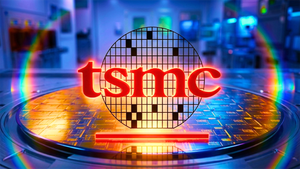Study shows ctDNA positivity is the most prognostic factor, demonstrating the potential for Signatera to redefine adjuvant treatment pathways in endometrial cancer
Natera, Inc. (NASDAQ: NTRA), a global leader in cell-free DNA testing, today announced a new study published in Gynecologic Oncology validating its personalized and tumor-informed molecular residual disease (MRD) test, Signatera, in endometrial cancer. The full study can be found here.
Endometrial cancer (EC) is the most common gynecologic malignancy in the United States. Disease incidence has been rising, but mortality has been rising even faster, potentially due to a higher frequency of aggressive high-risk subtypes of the disease.1-4 More accurate risk stratification is needed to identify those patients who will benefit from therapeutic interventions with curative intent. Current guidelines rely on clinicopathological risk factors to define risk groups and aid in adjuvant treatment decision-making.5,6 However, the decision to administer adjuvant therapy for patients with high-risk and high-intermediate-risk EC remains unclear, creating the need for better diagnostic tools to help determine who is most likely to benefit from treatment.7-10
This real-world study analyzed 267 plasma samples drawn after surgery from 101 patients with EC. The patient cohort was composed of multiple histological subtypes, with patients stratified based on clinicopathological risk factors into high-risk (52%), high-intermediate (22%), low-risk (15%), and other (12%). Key findings include:
- Patients who tested Signatera MRD-positive at either a single time point or longitudinally experienced significantly higher rates of recurrence than those who remained Signatera-negative (58% and 52%, vs. 6% and 0%, respectively), regardless of mismatch repair (MMR) or p53 status.
- Signatera MRD status was the only significant risk factor for recurrence when adjusted for clinicopathological risk groups and molecular subgroups such as MMR and p53 status (HR=18.9, p=.001).
“This study provides clinical validation of Signatera as a powerful post-surgical biomarker of recurrence risk for patients with endometrial cancer,” said Minetta Liu, MD, chief medical officer of oncology at Natera. “Use of Signatera in clinical workflows may help physicians and patients tailor their adjuvant treatment decisions based on direct evidence of molecular residual disease.”
About Signatera
Signatera is a personalized, tumor-informed, molecular residual disease test for patients previously diagnosed with cancer. Custom-built for each individual, Signatera uses circulating tumor DNA to detect and quantify cancer left in the body, identify recurrence earlier than standard of care tools, and help optimize treatment decisions. The test is available for clinical and research use and is covered by Medicare for patients with colorectal cancer, breast cancer (stage IIb and higher) and muscle invasive bladder cancer, as well as for immunotherapy monitoring of any solid tumor. Signatera has been clinically validated across multiple cancer types and indications, with published evidence in more than 60 peer-reviewed papers.
About Natera
Natera™ is a global leader in cell-free DNA testing, dedicated to oncology, women’s health, and organ health. We aim to make personalized genetic testing and diagnostics part of the standard of care to protect health, and inform earlier, more targeted interventions that help lead to longer, healthier lives. Natera’s tests are validated by more than 180 peer-reviewed publications that demonstrate high accuracy. Natera operates ISO 13485-certified and CAP-accredited laboratories certified under the Clinical Laboratory Improvement Amendments (CLIA) in Austin, Texas and San Carlos, California. For more information, visit www.natera.com.
Forward-Looking Statements
All statements other than statements of historical facts contained in this press release are forward-looking statements and are not a representation that Natera’s plans, estimates, or expectations will be achieved. These forward-looking statements represent Natera’s expectations as of the date of this press release, and Natera disclaims any obligation to update the forward-looking statements. These forward-looking statements are subject to known and unknown risks and uncertainties that may cause actual results to differ materially, including with respect to whether the results of clinical or other studies will support the use of our product offerings, the impact of results of such studies, our expectations of the reliability, accuracy and performance of our tests, or of the benefits of our tests and product offerings to patients, providers and payers. Additional risks and uncertainties are discussed in greater detail in "Risk Factors" in Natera’s recent filings on Forms 10-K and 10-Q and in other filings Natera makes with the SEC from time to time. These documents are available at www.natera.com/investors and www.sec.gov.
References
- Temkin SM, Kohn EC, Penberthy L, Cronin KA, Rubinsak L, Dickie LA, et al. Hysterectomy-corrected rates of endometrial cancer among women younger than age 50 in the United States. Cancer Causes Control. 2018;29:427–33.
- Siegel RL, Miller KD, Fuchs HE, and Jemal A. "Cancer statistics, 2022. CA Cancer J Clin. 2022;72(1):7-33.
- National Cancer Institute. Surveillance, Epidemiology, and End Results Program. Cancer stat facts: uterine cancer. Accessed February 2, 2024. https://seer.cancer.gov/statfacts/html/corp.html.
- Siegenthaler F, Lindemann K, Epstein E, et al. Time to first recurrence, pattern of recurrence, and survival after recurrence in endometrial cancer according to the molecular classification. Gynecol Oncol. 2022;165(2):230-238.
- Concin N, Matias-Guiu X, Vergote I, et al. ESGO/ESTRO/ESP guidelines for the management of patients with endometrial carcinoma. Int J Gynecol Cancer. 2021;31(1):12-39.
- Abu-Rustum N, Yashar C, Arend R, et al. Uterine Neoplasms, Version 1.2023, NCCN Clinical Practice Guidelines in Oncology. J Natl Compr Canc Netw. 2023;21(2):181-209.
- Keys HM, Roberts JA, Brunetto VL, et al. A phase III trial of surgery with or without adjunctive external pelvic radiation therapy in intermediate risk endometrial adenocarcinoma: a Gynecologic Oncology Group study. Gynecol Oncol. 2004;92(3):744-51.
- Nout RA, Smit VT, Putter H et al. Vaginal brachytherapy versus pelvic external beam radiotherapy for patients with endometrial cancer of high-intermediate risk (PORTEC-2): an open-label, non-inferiority, randomised trial. Lancet. 2010;375(9717):816-23.
- Group AS, Kitchener H, Swart AM, Qian Q, Amos C, and Parmar MK. Efficacy of systematic pelvic lymphadenectomy in endometrial cancer (MRC ASTEC trial): a randomised study. Lancet. 2009;373(9658):125-36.
- de Boer SM, Powell ME, Mileshkin L, et al. Adjuvant chemoradiotherapy versus radiotherapy alone for women with high-risk endometrial cancer (PORTEC-3): final results of an international, open-label, multicentre, randomised, phase 3 trial. Lancet Oncol. 2018;19(3):295-309.
View source version on businesswire.com: https://www.businesswire.com/news/home/20240205986663/en/
Contacts
Investor Relations: Mike Brophy, CFO, Natera, Inc., 510-826-2350, investor@natera.com
Media: Lesley Bogdanow, VP of Corporate Communications, Natera, Inc., pr@natera.com





